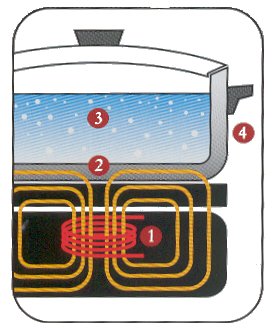The basic appliances in our homes are becoming less basic each year. Refrigerators are getting larger with separate temperature zones, dishwashers sanitize dishes and washers clean with less water than you would think possible.
Let’s start with washers. At the Columbus Dispatch , Kevin Kidder writes:
About 30 percent of washers sold are front loaders, which use 65 percent less water and 35 percent less electricity.
The complaint against front loaders used to be that putting clothes into them was a pain.
But manufacturers have added up to 18-inch pedestals on the bottom, elevating the machine and easing the strain on aching backs.
The machines achieve their efficiency through the horizontally oriented tubs, which don’t need to fill to wash clothes. They also spin faster than predecessors, meaning more water is removed from the fabric before it goes into the dryer.
Refrigerators aren’t just larger, they are 45% more efficient than they were in 1990. Another nod to saving resources is filtered water through the fridge. No more buying bottled water.
For those consumers who are concerned about the air in their refrigerator, “Sub-Zero will offer an ‘air-scrubbing system’ to eliminate bacteria and odor in the refrigerator air. The molecules from those odors won’t settle on the foods, altering the flavors.” One really big change in refrigerators is “new refrigerator drawers, which are stand alone units that, as the name would suggest, are shaped like under-the-counter drawers. They are about 2 feet wide, pull out like a drawer and have several cubic feet of storage.”
Moving on to ranges and ovens,
Ovens now commonly have convection fans that reduce cooking times. Many are dual-fuel — electric oven, gas range — combining the best methods of cooking for each. Electric ovens require 220-volt outlets.
Some ovens also have accompanying warming drawers, designed to stay lower than 200 degrees.
Some newer models keep foods moist by injecting steam into the cooking cavern.
Using steam preserves the nutrients in vegetables and is good for other foods that need moisture such as souffles, said Sue Scatterday, commercial sales specialist with Builders Appliance Supply on the Far East Side.
With ranges, an older technology from the 1970s — induction cooking — has been refined and could be the next big trend in stovetop cooking. With induction cooking, magnetic fields heat the iron cooking pot directly; the surface of the range remains cool to the touch.Gas ranges have evolved, as well. More people want the professional look of industrial burners and stainless steel.
With those higher temperature burners, hoods have become more powerful yet quieter.
“Because we’re seeing so many, we stress that you need the large hoods,” she said. And because newer houses are so airtight, some people actually need “air makeup systems” that allow air to flow into the house so the hood can work properly.
Then we have dishwashers- the newer ones are drying hotter and using 39% less energy than in 1990. Dishwashers are also available in under-the-counter drawer styles, allowing for multiple work stations in kitchen design. I’m personally especially pleased with how quiet the new dishwashers are.
Today’s appliances are performing better, more efficiently, and with less effort than ever.


